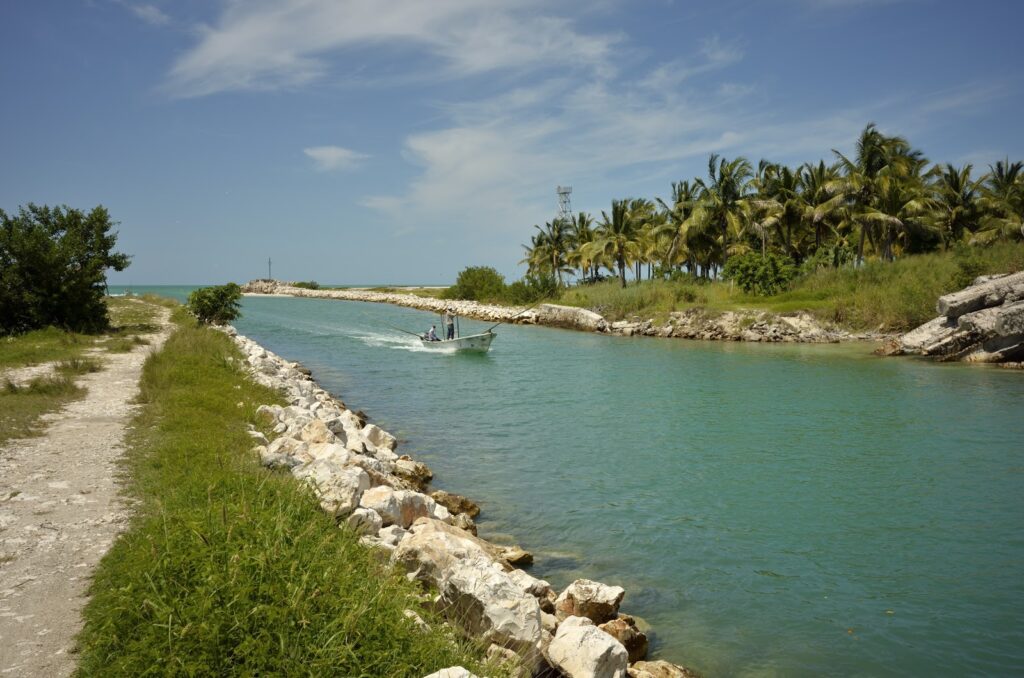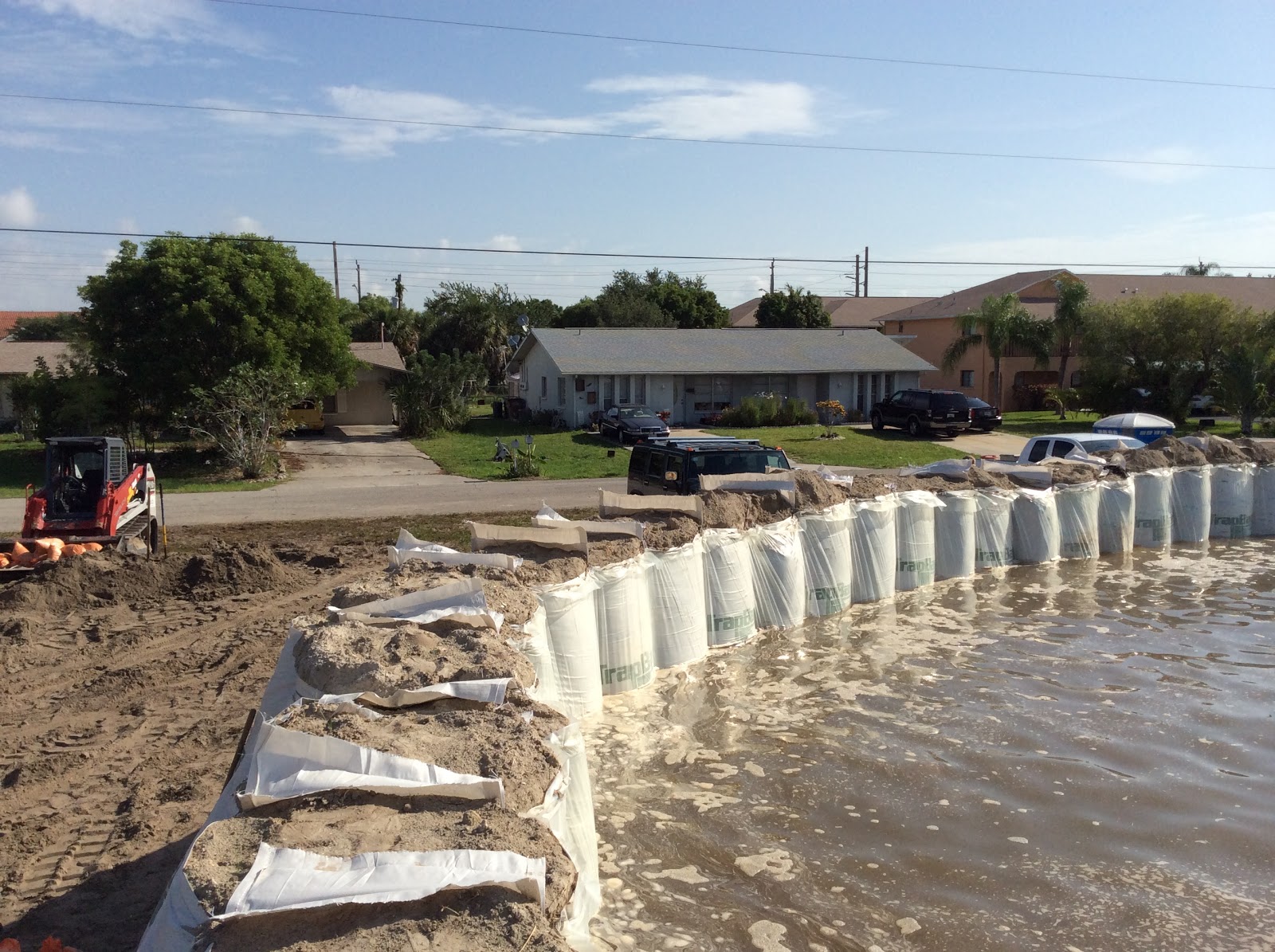Florida Hurricane Protection: How to Prevent Flooding from Storm Surge
Hurricane protection is critical for homeowners and businesses in Florida. Learn about the types of tropical storm flooding and how to keep your property safe.

Hurricane season in Florida brings numerous threats to commercial property and homes, including multiple types of flood risks. However, most homeowners and property insurance policies in Florida don’t provide coverage for flooding, meaning you’re liable to pay for damage from storm surges and other hurricane-related floods.
There are ways to protect your property from damage without the back-breaking labor of setting up traditional sandbags. Explore the most common types of flooding and storm damage you might see in Florida, along with innovative solutions to keep water from destroying property and endangering lives.
Types of Florida Hurricane Flooding
Florida Flash Flooding from Hurricanes
Flash flooding is a type of flooding that typically occurs with sudden, heavy rain, often within three to six hours from when a storm begins. In urban or developed areas with fewer trees and other plants, it often occurs even sooner.
Given the extreme rainfall that accompanies hurricanes, flash floods are a common occurrence during and after a storm. The sheer amount of rain a tropical storm or hurricane brings can overwhelm drainage systems in a matter of minutes, sometimes leaving people unprepared or trapped in their homes, cars, or businesses.
Flash flooding in Florida typically happens when a tropical storm or hurricane makes landfall. However, unlike storm surges and coastal flooding, flash floods can occur anywhere, even inland areas such as Orlando during major weather events.
Florida Coastal Flooding
Coastal flooding is a common occurrence before, during, and after hurricanes in Florida. They can happen as a result of combined high tides and high surf ahead of a storm making landfall, or even as a result of a storm surge.
Dry, low-lying areas and human-made structures created along coastlines are especially prone to coastal flooding. The latter situation is particularly risky, as damage from seawater can harm the structural integrity of buildings, leading to possible collapses over time.
How Tropical Storms Cause Florida Flooding
Although tropical storms have lower sustained wind speeds than hurricanes, they can still bring just as much rain as even a Category 5 hurricane. Therefore, they can cause just as much flood damage, regardless of the wind they produce.
Additionally, tropical storms still produce storm surges, which can cause even more damage in addition to coastal and flash flooding. They are especially dangerous in low-lying areas, such as those below sea level.
Protecting Against Storm Surges
What Is Storm Surge?
A storm surge is a flood of seawater that occurs as a hurricane or tropical storm pushes inland. It occurs when intense winds push seawater beneath a storm onshore, far past the typical point of a high tide for that area.
The strength of the surge, along with the corrosive nature of seawater, can cause serious damage to life and property, including death during major hurricanes.
How Far Inland Does Storm Surge Go in Florida?
Storm surges can push quite far inland depending on a few different factors, according to the National Ocean Service. These might include:
- Wind speeds: Higher winds can lead to a larger rise in the water level.
- Barometric pressure: While not the largest factor in a storm surge’s size by any means, lower pressure within the storm can cause a more severe surge.
- Land elevation: Areas at or even below sea level are at greater risk, especially if the surrounding waters have a shallow continental shelf—this is the case in many Florida cities due to the state’s geography.
- Land shape: Bays, bay-shaped coastal areas, and harbors can be hit especially hard during storm surge events.
Which Cities Are Vulnerable to Storm Surge in Florida?
Any city along Florida’s coasts is at risk of storm surges after a hurricane. However, some cities are more vulnerable due to being in lower-lying areas or larger than others.
Some of the Florida cities where storm surge poses the greatest threat include:
- Pensacola
- Destin
- Tampa
- Bradenton
- Miami
- Boca Raton
- Fort Lauderdale
- Jacksonville
- St. Augustine
- Naples
- Key West
This list is not exhaustive. Any city or town near Florida’s coast is at risk of severe storm surge during a hurricane or tropical storm. While many of these cities have invested in seawalls and other infrastructure, these can become overwhelmed, leading to property damage if they fail.
Direct Florida Hurricane Protection Against Flooding
Before storms, it’s common to see cities and neighborhood associations setting up barrier systems to prevent tropical storm flooding in Florida. Many of these organizations use TrapBag® to set up flood barrier systems faster, all while using fewer bags and materials than a traditional sandbag wall.
Here are some common barrier systems that can use TrapBag to prevent or mitigate flood damage during hurricanes.
Levees
Businesses and homeowners can use TrapBag to rapidly create a levee embankment system to prevent flash flood and storm surge damage from affecting their property. The pentagon-shaped bag cells are sloped on one side and open at the top, so users can fill each cell with sand or other materials quickly and easily ahead of an approaching hurricane.
Unlike traditional levees, if one of the cells in a set is compromised during a hurricane by debris, it won’t impact the integrity of the rest of the barrier, minimizing property damage.
Seawalls
In addition to protecting structures during a hurricane, TrapBag can also be used to create or reinforce seawalls. A TrapBag seawall can protect the land against storm surge damage, preventing shoreline erosion in hurricanes and other emergency situations with easy setup and teardown compared to traditional sandbags.
Dikes/Berms
While dikes are a more permanent solution to regulating water levels, berms are a temporary barrier to keep water away from property or buildings. Both make a critical difference during a major hurricane by keeping water away from electrical lines and other infrastructure.
Because they are watertight by design, TrapBag cells can be made into a berm that exists at the peak of a hill or slope and diverts water from flash flooding or storm surge away from homes and businesses. They are also easy and quick to deploy—unlike traditional sandbag dikes—and can be set up by an individual to prevent flash flooding in the hours before a tropical storm makes landfall.
Dams
Temporary dams are a handy structure for flood protection in Florida before a hurricane. However, building one is labor-intensive and difficult to do on your own, especially ahead of hurricanes and other flood events.
Luckily, TrapBag can be stacked like a traditional sandbag, but with less labor and more control over the width and height of the dam. It also requires 40% less fill material than a sandbag wall and is made of high-strength textile, making for a more cost-effective method to keep water away from property, buildings, and low-lying construction sites.
Other Ways to Invest in Florida Flood Control
Erosion Control Solutions
Erosion typically follows hurricanes due to water and wind damage the storm leaves behind. However, preventative measures for erosion control are available to mitigate the devastation these storms can cause.
Long before the tropical storm is coming, TrapBag can be used to prevent beaches from eroding away. Instead of filling the cells with sand for a more temporary solution, TrapBag can be filled with concrete to create a retaining wall that keeps beach sand from completely washing away. While this solution is designed to protect the beach from more normal levels of wind and water erosion, it can also prevent tropical storms from making the damage even worse.
Stormwater Containment
Stormwater runoff can become contaminated with everything from sediment to sewer overflow. In turn, this can make the aftermath of a hurricane even worse with habitat loss for wildlife and limited access to clean water, spreading waterborne diseases, and more.
As with preventative erosion control, stormwater containment is an essential tactic for keeping natural disasters from causing even more devastation. By reducing the amount of stormwater entering a sewage or water treatment system, you also prevent these systems from being overwhelmed and breaking down when they are most needed.
In addition to keeping water out with dams, dikes, and levees, TrapBag can also keep water contained, with easier installation and retention than traditional tarp- or sandbag-lined solutions. Pipes can be installed through the TrapBag barrier, making it essential for containment ponds and stormwater detention.
Why Use TrapBag for Your Florida Hurricane Protection System?
TrapBag is a faster, less wasteful solution than traditional sandbags, as it takes less time, effort, and filler materials to set up watertight barriers. A TrapBag barrier is easier for individuals to set up on their own than traditional sandbag dikes or levees, so more bags can be set up to further protect areas vulnerable to storm surges and flooding.
Adding to the cost-effectiveness, this containment system also is less likely to fail than traditional sandbags, thanks to its sloping design that mitigates the risk of the barrier collapsing.
Protect Your Florida Property Against Hurricanes with TrapBag
Prevention is less expensive than cleanup after a hurricane or tropical storm, and TrapBag makes the process even easier and more affordable for homeowners and businesses.
To learn more about how TrapBag can keep your property safe during the most dangerous storms, contact us about your project today.


